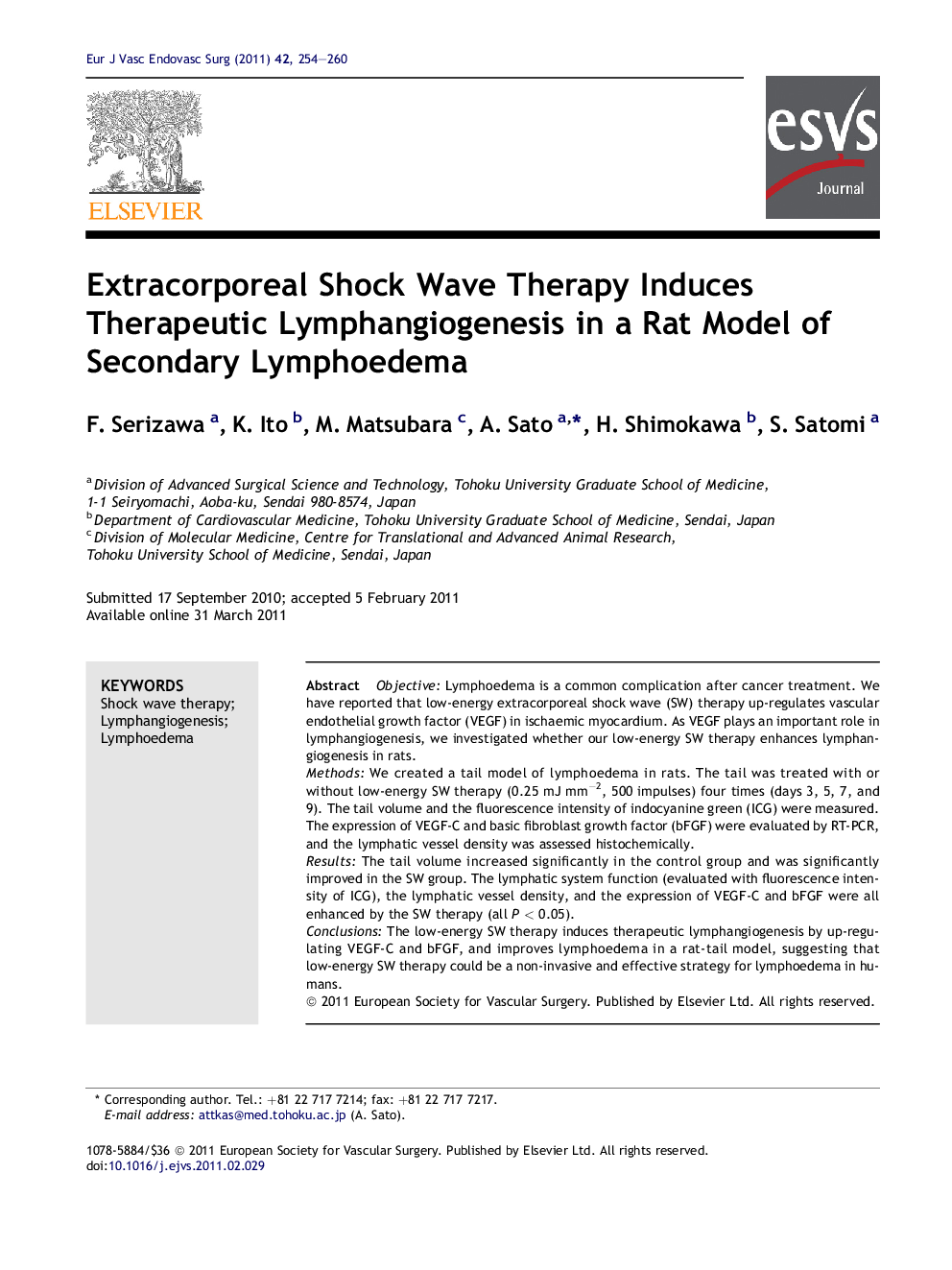| Article ID | Journal | Published Year | Pages | File Type |
|---|---|---|---|---|
| 2913245 | European Journal of Vascular and Endovascular Surgery | 2011 | 7 Pages |
ObjectiveLymphoedema is a common complication after cancer treatment. We have reported that low-energy extracorporeal shock wave (SW) therapy up-regulates vascular endothelial growth factor (VEGF) in ischaemic myocardium. As VEGF plays an important role in lymphangiogenesis, we investigated whether our low-energy SW therapy enhances lymphangiogenesis in rats.MethodsWe created a tail model of lymphoedema in rats. The tail was treated with or without low-energy SW therapy (0.25 mJ mm−2, 500 impulses) four times (days 3, 5, 7, and 9). The tail volume and the fluorescence intensity of indocyanine green (ICG) were measured. The expression of VEGF-C and basic fibroblast growth factor (bFGF) were evaluated by RT-PCR, and the lymphatic vessel density was assessed histochemically.ResultsThe tail volume increased significantly in the control group and was significantly improved in the SW group. The lymphatic system function (evaluated with fluorescence intensity of ICG), the lymphatic vessel density, and the expression of VEGF-C and bFGF were all enhanced by the SW therapy (all P < 0.05).ConclusionsThe low-energy SW therapy induces therapeutic lymphangiogenesis by up-regulating VEGF-C and bFGF, and improves lymphoedema in a rat-tail model, suggesting that low-energy SW therapy could be a non-invasive and effective strategy for lymphoedema in humans.
